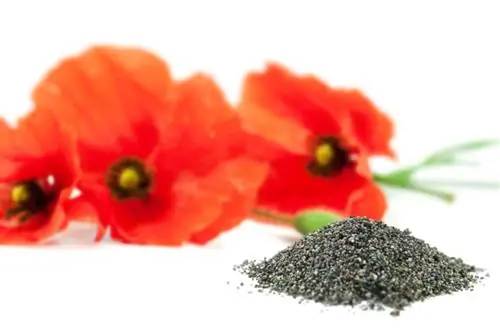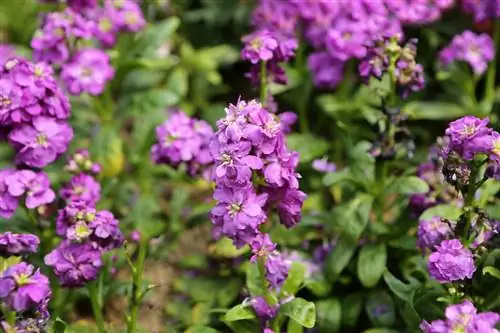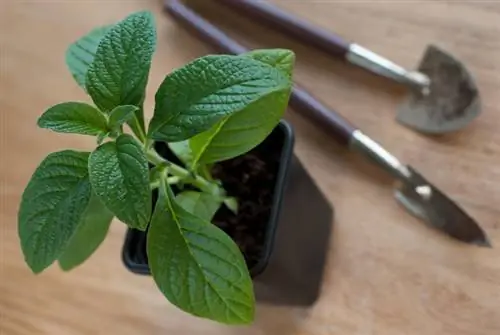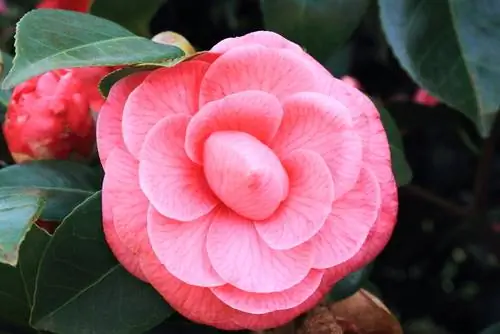- Author admin [email protected].
- Public 2023-12-16 16:46.
- Last modified 2025-01-23 11:21.
So that camellias transform into magnificent, richly branched flower beauties, a pruning step sets the stage. In later years, pruning care is reduced to occasional shape and maintenance pruning. Read this beginner-friendly guide on when and how to properly prune camellias.

When and how should camellias be trimmed?
Camellias should be cut in spring, immediately after flowering. When pruning, the previous year's growth is cut back to 5 or 10 cm, directly above a pair of leaves or a bud. During shape and maintenance pruning, dead, diseased or bare shoots are removed and remaining branches are shortened by a maximum of a third.
Cutting camellias in spring
Camellias are also affectionately called “roses of winter”. The most beautiful varieties for winter gardens, balconies and mild garden locations produce their flowers from February to April/May. Immediately afterwards, the ornamental bushes sprout fresh and begin to lay buds for the next flowering period. In this phase, the time window for pruning care is open until the beginning/mid of July. Buds that have already been established could fall victim to later pruning measures.
Secondary pruning promotes bushy branching
The very slow growth of a camellia causes the plant to constantly gain height and branch sparsely at the bottom. The reason for the undesirable growth behavior is the law of top support, according to which shoot tips are primarily supplied with nutrients in order to be ahead in the race to the light. With a targeted build-up cut you can effectively counteract this tendency. How to do it right:
- Prune camellia every spring for the first three to five years
- Cut back last year's growth to 5 or 10 cm
- Cutting guide: a few millimeters above a pair of leaves or an eye
A sap buildup forms beneath each interface, which has a revitalizing effect on deeper, previously dormant buds. Now more reserve substances flow into the neglected eyes, which are then encouraged to sprout. The result is a camellia with a lushly branched base.
Repotting and cutting go hand in hand
If camellias have been given expert pruning, pruning care is no longer part of the care program every year. Due to the leisurely growth rate, every centimeter of growth is greeted with joy. Only the withered flowers should be cleaned out every year so that the plant energy is invested in the shoots and bud formation. Only when there is a lot of space in the pot and the camellia needs to be repotted is it advisable to prune it for shape and maintenance. How to do it correctly:
- Best time is at the end of the flowering period
- Best cutting tool: scissors with bypass mechanism (ideally rose scissors)
- Unpot the camellia and shake off the old substrate
- Cut off dead, diseased, bare shoots at the base
- Cut back remaining branches by a maximum of a third
- Cut out stunted, brown rotten roots
- Create a drainage out of pottery shards in the new bucket on the bottom of the pot
- Plant the camellia in fresh rhododendron or ericaceous soil and water it
The key to success in cutting camellias is the bud cutting technique. Always choose the starting point for the scissor blades a short distance from a pair of leaves or an easily recognizable bud. Never cut into the leafless base of the stem. In this area camellias are stingy with sleeping eyes, so that in the worst case growth comes to a standstill.
Tip
Thanks to global warming, camellias are emerging as evergreen flower hedges in mild regions. In this picturesque variant, pruning care is limited to a planned build-up pruning. A fully trained camellia hedge should occasionally be thinned out after flowering. If excessively long shoots protrude from the shape, a selective cut ensures order in the appearance.






